
Blue Murder at St Trinian's is a 1957 British comedy film, directed by Frank Launder, co-written by Launder and Sidney Gilliat, and starring Terry-Thomas, George Cole, Joyce Grenfell, Lionel Jeffries and Richard Wattis; the film also includes a brief cameo of Alastair Sim, reprising his lead role in the 1954 film, The Belles of St. Trinian's. Inspired by the St Trinian's School comic strips by British cartoonist Ronald Searle, the film is the second entry in the St. Trinian's film series, with its plot seeing the students of the fictional school making plans to secure a place on a European tour, all while subsequently aiding a criminal who is secretly seeking to escape the country with stolen jewels.
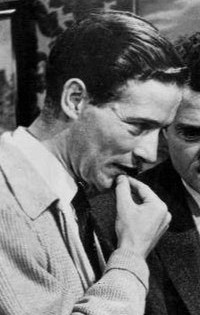
Michael Joseph Anderson was an English film and television director. His career spanned nearly 50 years across three countries, working at various times in the United Kingdom, the United States, and Canada. His most critically and commercially successful works include the World War II film The Dam Busters (1955), the dystopian sci-fi film Logan's Run (1976), and the comedy adventure epic Around the World in 80 Days (1956), which won the 1957 Academy Award for Best Picture.
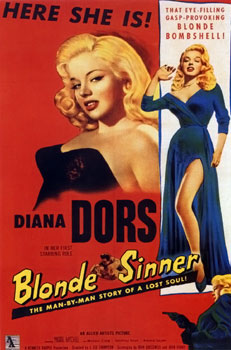
Yield to the Night is a 1956 British crime drama film directed by J. Lee Thompson and starring Diana Dors. The film is based on the 1954 novel of the same name by Joan Henry.

Associated British Picture Corporation (ABPC), originally British International Pictures (BIP), was a British film production, distribution and exhibition company active from 1927 until 1970 when it was absorbed into EMI. ABPC also owned approximately 500 cinemas in Britain by 1943, and in the 1950s and 60s owned a station on the ITV television network. The studio was partly owned by Warner Bros. from about 1940 until 1969; the American company also owned a stake in ABPC's distribution arm, Warner-Pathé, from 1958. It formed one half of a vertically integrated film industry duopoly in Britain with the Rank Organisation.
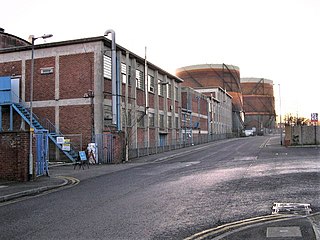
Gate Studios was one of the many studios known collectively as Elstree Studios in the town of Borehamwood, England. Opened in 1928, the studios were in use until the early 1950s. The studios had previously been known as Whitehall Studios, Consolidated Studios, J.H. Studios and M.P. Studios.
The Whiskey Au Go Go fire was a fire that occurred at 2:08 am on Thursday 8 March 1973, in the Whiskey Au Go Go nightclub in Fortitude Valley, Brisbane, Australia that killed 15 people.

The Criminal is a 1960 British neo-noir crime film directed by Joseph Losey and starring Stanley Baker, Sam Wanamaker, Grégoire Aslan, Jill Bennett, and Margit Saad. Baker plays Johnny Bannion, a recently-paroled gangster who is sent back to prison after robbing a racetrack, with both the authorities and the criminal underworld looking for the money.
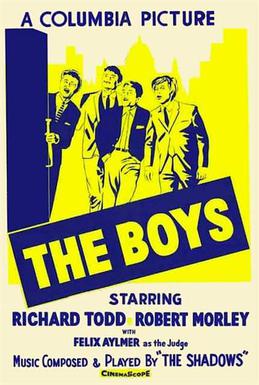
The Boys is a 1962 British courtroom drama film, directed by Sidney J. Furie and starring Richard Todd, Robert Morley and Felix Aylmer.The screenplay was by Stuart Douglass.

French Without Tears is a 1939 British comedy film directed by Anthony Asquith and starring Ray Milland. It was based on the 1936 play of the same name by Terence Rattigan, who also co-wrote the script. An on-off working relationship between Asquith and Rattigan began with this film and continued over the next 15 years.

The Yellow Balloon is a 1953 British drama film directed by J. Lee Thompson and starring Andrew Ray, William Sylvester, Kathleen Ryan, Kenneth More and Hy Hazell. It was Thompson's second feature as director. It was distributed by Associated British and produced by the company's Marble Arch Productions. It was made at Elstree Studios with sets designed by the art director Robert Jones. Location shooting took place around Bayswater and Chelsea including Queensway tube station.

Murder Without Crime is a 1950 British crime film directed by J. Lee Thompson and starring Dennis Price, Derek Farr and Patricia Plunkett. J. Lee Thompson also wrote the screenplay adapted from Double Error, his own successful West End play.
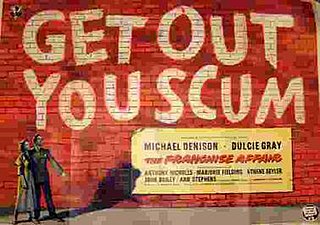
The Franchise Affair is a 1951 British mystery thriller film directed by Lawrence Huntington and starring Michael Denison, Dulcie Gray, Anthony Nicholls and Marjorie Fielding. It is a faithful adaptation of the novel The Franchise Affair by Josephine Tey. It was shot at Elstree Studios with location shooting taking place around Chipping Campden in Gloucestershire which stood in for the fictional town of Melford. The film's sets were designed by the art director Terence Verity.
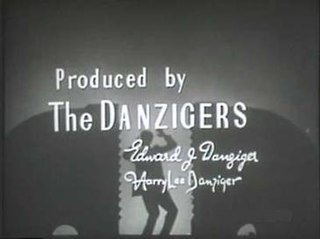
Edward J. Danziger (1909–1999) and Harry Lee Danziger (1913–2005) were American-born brothers who produced many British films and TV shows in the 1950s and 1960s.

Three Sundays to Live is a low budget 1957 film noir British film directed by Ernest Morris and starring Kieron Moore and Jane Griffiths.

The House of the Arrow is a 1940 British mystery film directed by Harold French and starring Kenneth Kent, Diana Churchill and Belle Chrystall. It was made at Elstree Studios. The film is an adaptation of A.E.W. Mason's 1924 novel The House of the Arrow featuring the French detective Inspector Hanaud. It was released in the U.S. by PRC as Castle of Crimes.
Love Lies is a 1932 British musical comedy film directed by Lupino Lane and starring Stanley Lupino, Dorothy Boyd and Jack Hobbs. It was made by British International Pictures at Elstree Studios. It was based on Stanley Lupino's own hit 1929 stage musical.
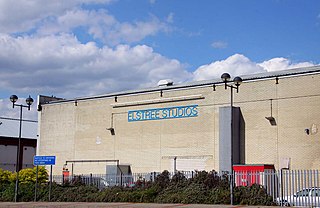
Elstree Studios on Shenley Road, Borehamwood, Hertfordshire is a British film and television production centre operated by Elstree Film Studios Limited. One of several facilities historically referred to as Elstree Studios, the Shenley Road studios originally opened in 1925.
Murder Story is a 1958 Australian television play.
New Elstree Studios was a British film studio complex that was the main production centre for the Danziger Brothers from 1956 to 1962, and was one of several sites collectively known as "Elstree Studios". 60 B-movies and 350 half-hour TV episodes were filmed there, for both British and American markets.














